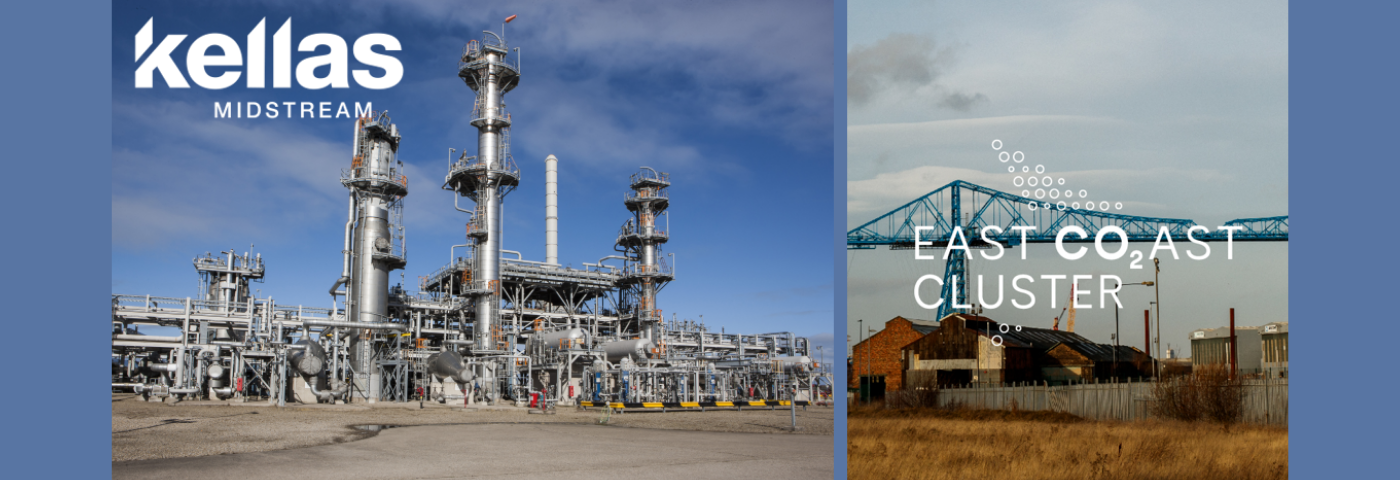Blue hydrogen and the green industrial revolution
The UK must decarbonise industry to achieve its target of net zero emissions by 2050 – not exactly breaking headlines for those of us working in the energy industry, but maybe a not so widely known fact is that nearly half of carbon emissions from UK industrial clusters come from Britain’s historic engine room: Teesside and the Humber.
Local industrial sites in Teesside, including Kellas Midstream’s CATS (Central Area Transmission System) terminal, are responding by looking at ways to remedy this and evolve their businesses to meet the new energy future we are all part of.
Why Hydrogen?
Hydrogen is identified in the government’s 10-point plan as an essential energy source to enable us to reach a net zero future in the UK by 2050.
The recently published government strategy on hydrogen suggests that 20-35% of the UK’s energy consumption by 2050 could be hydrogen-based. Their report states that in the UK, a lower carbon hydrogen economy could deliver emissions savings equivalent to the carbon captured by 700 million trees by 2032 and is a key pillar of capitalising on cleaner energy sources as the UK moves away from fossil fuels.
Green, Brown, Grey – why Blue Hydrogen?
It’s clear that hydrogen has a key role to play in the new energy mix with the two contenders being green and blue. Although green hydrogen is the cleanest of the two -when renewable sources of electricity are used in processing – the technology is not readily available at large scale and the costs are two to three times more expensive than blue hydrogen*. This is where blue hydrogen can make a huge difference in reducing emissions now. The technology is scalable, affordable and available.
What are we doing?
Kellas owns and operates critical midstream infrastructure in Teesside, the CATS terminal, and we are looking to fuel switch our fired heaters there from natural gas to low carbon hydrogen. We believe we are also ideally located for blue hydrogen production and are currently looking into investing in a 1GW blue hydrogen facility. We are also participating in the East Coast Cluster bid, which if successful will result in the largest industrial decarbonisation project in the UK.
Why CATS?
There are many features that make the CATS terminal an ideal location for blue hydrogen production in Teesside not least that we receive around 10 billion cubic metres of gas a year, representing 26% of UK domestic gas production. We also have the land footprint required for the construction of a large-scale blue hydrogen facility.
Currently all our gas from the CATS terminal is exported to the national grid and another distinct advantage is that the NTS (National Transmission System) connection point is within the CATS boundary site. This, together with the availability of significant quantities of natural gas, means the location would also be optimal for a future blending facility for feeding hydrogen into the NTS.
This would be the first blue hydrogen production facility on Teesside, and have an asset life of around 25 years. The project, estimated to come on stream by the end of 2027, would deliver low-carbon hydrogen that will decarbonize industrial processes in the Teesside industrial cluster and/or blend with natural gas into the NTS or NGN local network.
It’s a new beginning for our industry – not the end
The oil and gas industry is responding and evolving into an energy industry that recognises and embraces the wide range of energy sources that are required. It’s clear that hydrogen is a new star in the range of solutions our world needs. We are ready and prepared for this evolution and excited for the future of our industry.
Projects like ours are a great example of what our industry is doing, together, to rise to the challenge. For example, if our plant is highly utilised, we will capture and store around two million tonnes of CO2 per year. Our plant, if built, will create hundreds of construction roles over a three-year development period as well as long term plant operation roles for at least 25 years. We estimate another 100 direct operational jobs and up to 300 jobs in the supply chain and during construction there is the potential for around 400 direct jobs and many more indirect opportunities.
Energy transition doesn’t spell the end of our industry because we are now a much bigger, wider and evolved industry and in fact are the ones best suited to delivering as we have the transferable skills and expertise to rise to the challenges.
If you would like to talk to us about this, or any other project, then please contact us at info@kellasmidstream.com You can also follow us on LinkedIn to keep up to date with latest developments.
*December 2020. International Renewable Energy Agency

